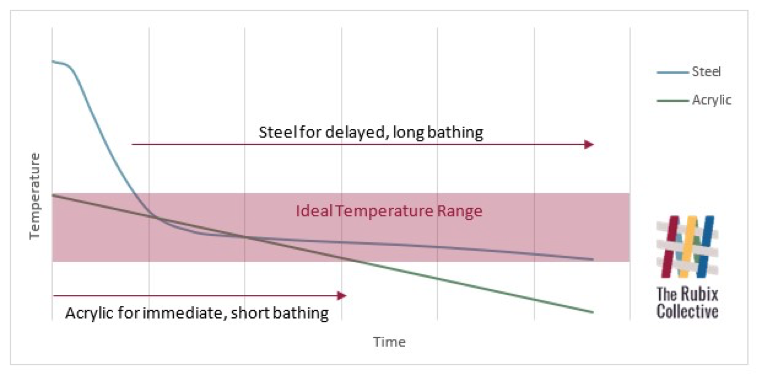Resources

92. Bathtub Selection - Heat Retention
Available information wildly differs regarding the heat retention performance of different bathtub materials. One authority will extol steel and the next will blatantly contradict the findings. The Rubix Collecitve team of modern residential designers in the Northern Beaches have researched why this is so and have discovered the source of the confusion. We created the below graph to demonstrate what type of bath is best for heat retention in differing circumstances.

A steel bathtub is cold to touch (because it is a good heat conductor). This means that when water comes into contact upon filling, the water temperature drastically drops as the heat is absorbed by the steel. However as the temperature of the water and the tub start to regulate and eventually match temperatures, the result is high, stable heat retention over time. The best way to run this kind of bath is hotter than eventually desired and entering the bath only when the temperature is right.
Cast Iron bathtubs are even denser than steel so have a very similar temperature/time curve but more exaggerated. I.e. greater drop in initial temperature, but even more prolonged, stable heat retention than steel.
An acrylic bathtub however is warm to touch even when dry due to its poor heat conductivity. It will be comfortable to sit in the bathtub whilst it fills with the desired water temperature. However, the heat loss gradually declines faster than the regulated steel bathwater. It is best to bathe in an acrylic bath immediately and not for long periods at a time.
The heat retention ratings in the table above are based on delayed, long term bathing. They should also be used to compare bathtubs of the same format. I.e. A cast-iron freestanding bath should be compared with an acrylic freestanding bath. For example, comparing a cast-iron freestanding bath with an acrylic inset bath will make the ratings unreliable.